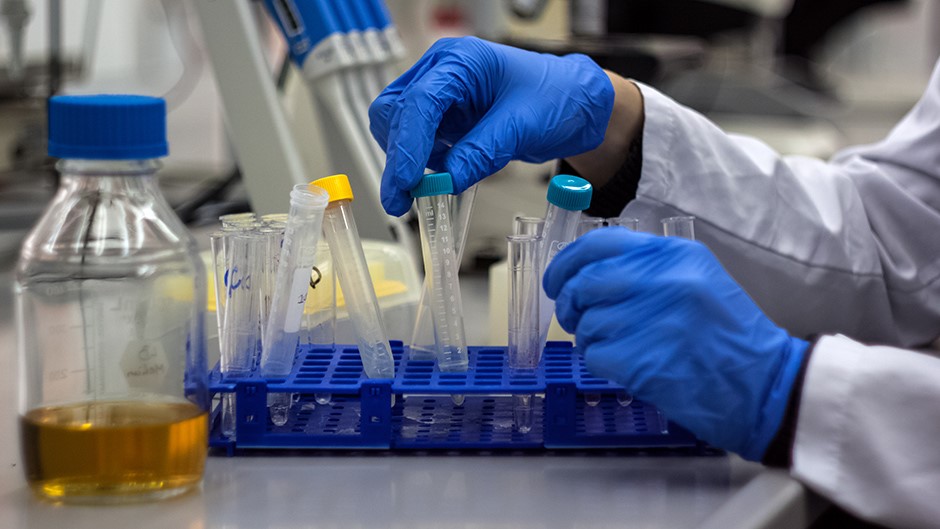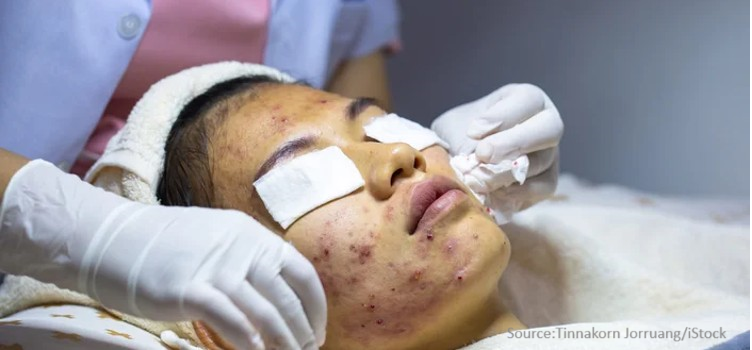
Cartilage Repair Market by Type (Hyaline Cartilage and Fibrocartilage), by Modality (Cell Based and Non-cell Based), and by End User (Hospitals and Clinics, Ambulatory and Surgical Centres)–Global Opportunity Analysis and Industry Forecast 2024-2030.
Cartilage Repair Market Overview
The global Cartilage Repair Market size was valued at USD 1.36 billion in 2023 and is predicted to reach USD 3.48 billion by 2030 with a CAGR of 14.4% from 2024-2030. Cartilage repair market also known as cartilage regeneration market comprises a range of products, technologies, and services aimed at restoring damaged cartilage. This market includes advanced products such as implants and regenerative medicine techniques involving stem cells and biologics such as platelet-rich plasma.
Surgical procedures, including microfracture and osteochondral autograft transplantation, along with non-surgical treatments such as physical therapy and medication, are also integral to the market. This market flourishes on ongoing innovation, personalized treatment strategies, and global expansion initiatives, providing substantial prospects for advancing patient care and fuelling growth within the healthcare sector.
Market Dynamics and Trends
The growing prevalence of osteoarthritis across the world is driving the cartilage repair market, as the increasing incidence of this condition heightens the demand for effective treatments to restore or regenerate damaged cartilage. According to the latest report by the Institute for Health Metrics and Evaluation, nearly 1 billion people are projected to have osteoarthritis by 2050. The report anticipates a 75% increase in knee osteoarthritis and a 50% rise in hand osteoarthritis by the same year. This rising prevalence highlights the urgent need for advanced cartilage regeneration solutions to address the growing burden of osteoarthritis.
Moreover, the rising proportion of the aging population worldwide drives demand for advanced cartilage repair solutions, as age-related cartilage degeneration increases the need for effective treatments and innovative therapies to manage and restore cartilage health.
According to recent report published by the World Health Organization, the proportion of the world's population over 60 years is expected to nearly double from 12% in 2015 to 22% in 2050. This demographic shift emphasizes the growing necessity for advanced cartilage regeneration technologies to address the increasing prevalence of age-related joint issues.
Furthermore, the rising global prevalence of sports-related injuries drives the growth of the cartilage repair sector, as these injuries frequently cause cartilage damage and increase the demand for advanced repair solutions. According to a recent report by the National Safety Council, 3.6 million people were treated in emergency departments for sports-related injuries in 2022. This high incidence of joint and cartilage trauma increases the demand for effective repair treatments that facilitate quick recovery and enable athletes to return to peak performance.
However, high cost associated with advanced cartilage repair treatments, including stem cell therapies and complex surgical procedures, restraints the cartilage repair market growth. On the contrary, the introduction of combination therapy in cartilage repair techniques may create ample opportunities of the market in forthcoming years. These therapies address various cartilage regeneration processes, such as promoting cell growth, producing extracellular matrix, and reducing inflammation. By integrating these different approaches, combination therapies offer better results than single treatments, enhancing the overall effectiveness of cartilage repair.
Market Segmentations and Scope of the Study
The cartilage repair market report is segmented on the basis of type, modality, end-user, and region. On the basis of type, the market is divided into, hyaline cartilage and fibrocartilage. Based on modality, the market is segmented into cell based and non-cell based. Based on end user, the market is segmented into hospitals & clinics, ambulatory, and surgical centres. Regional breakdown and analysis of each of the aforesaid segments includes regions comprising of North America, Europe, Asia-Pacific, and Rest of The World (Row).
Geographical Analysis
North America region dominates the cartilage repair market share during the forecast period due to the increasing prevalence of musculoskeletal diseases in the region. According to the Centers for Disease Control and Prevention, in 2022, the age-adjusted prevalence of diagnosed arthritis among adults aged 18 and older in the U.S. was 18.9%. Women were more likely to have arthritis, with a prevalence rate of 21.5%, compared to men, who had a prevalence rate of 16.1%. With the highest prevalence of arthritis there is a growing need for effective treatments to address the rising prevalence of musculoskeletal disorders in the region.
Moreover, increased healthcare spending in North America drives the growth of the cartilage repair industry, as rising expenditure and funding for advanced medical simulation support the adoption of innovative repair technologies. According to recent report from the Centers for Medicare & Medicaid Services (CMS), medical spending in the U.S. is increasing significantly. Health expenditure in the nation rose to approximately USD 4.84 trillion in 2023, up from USD 4.50 trillion in 2022.
This higher investment in healthcare in the region facilitates the development and implementation of cutting-edge cartilage regeneration solutions, expanding treatment options and fueling cartilage repair market expansion. On the other hand, Asia-Pacific is expected to witness a steady rise in the cartilage repair sector during the forecast period due to increasing proportion of aging population in the region, that increases the need for effective treatments and innovative therapies to manage and restore cartilage health.
The World Health Organization states that, China is experiencing one of the most rapid increases in its aging population globally and the proportion of individuals aged over 60 years in China is expected to surge to 28% by the year 2040. Such rise in the aging population drives the need for cartilage regeneration solutions to address age-related cartilage issues.
Moreover, the growing incidence of sports-related injuries in this region is significantly driving the market growth, as these injuries often involve cartilage damage and heighten the demand for cartilage repair interventions. According to a recent report by the National Institutes of Health, during the Beijing 2022 Winter Olympics, a total of 2,897 athletes from 91 nations experienced injury or illness. Medical staff reported 326 injuries and 80 illnesses, resulting in an average of 11.3 injuries and 2.8 illnesses per 100 athletes over the 17-day period. This surge in injuries, frequently involving cartilage damage, underscores the increasing need for effective repair solutions.
Competitive Landscape
Various key market players operating in the cartilage repair industry includes Osiris Therapeutics, Inc., Smith & Nephew, AlloSource, Vericel Corporation, Zimmer Biomet Holdings, Inc., Medtronic plc, Stryker Corporation, Anika Therapeutics, Inc., B. Braun Melsungen AG, and Orthocell Limited, and others.
These market players are adopting various strategies such as acquisition and product launches to remain dominant in the market. For instance, in February 2024, Zimmer Biomet Holdings launched ROSA Robotics application for shoulder replacement. This innovative application is designed to enhance surgical precision, improve implant positioning, and optimize patient outcomes. Additionally, it offers the potential to streamline surgical workflows and reduce procedure times, ultimately benefiting both surgeons and patients alike.
Moreover, in January 2024, Smith & Nephew acquired CartiHeal, developer of Agili-C, a ground breaking sports medical imaging technology for knee cartilage regeneration. With the acquisition, Smith & Nephew aims to leverage Agili-C's one-step treatment for osteochondral lesions to address a broader patient population.
Key Benefits
-
The report provides quantitative analysis and estimations of the cartilage repair market from 2024 to 2030, which assists in identifying the prevailing industry opportunities.
-
The study comprises a deep-dive analysis of the current and future cartilage repair market trends to depict prevalent investment pockets in the industry.
-
Information related to key drivers, restraints, and opportunities and their impact on the cartilage repair market is provided in the report.
-
Competitive analysis of the key players, along with their market share is provided in the report.
-
SWOT analysis and Porters Five Forces model is elaborated on the study.
-
Value chain analysis in the market study provides a clear picture of roles of stakeholders.
Cartilage Repair Market Key Segments
By Type
-
Hyaline Cartilage
-
Fibrocartilage
By Modality
-
Cell Based
-
Non-Cell based
By End-User
-
Hospitals and Clinics
-
Ambulatory
-
Surgical Centres
By Region
-
North America
-
The U.S.
-
Canada
-
Mexico
-
-
Europe
-
The U.K.
-
Germany
-
France
-
Italy
-
Spain
-
Denmark
-
Netherlands
-
Finland
-
Sweden
-
Norway
-
Russia
-
Rest of Europe
-
-
Asia-Pacific
-
China
-
Japan
-
India
-
South Korea
-
Australia
-
Indonesia
-
Singapore
-
Taiwan
-
Thailand
-
Rest of Asia-Pacific
-
-
Rest of the World (RoW)
-
Latin America
-
Middle East
-
Africa
-
Key Players
-
Osiris Therapeutics, Inc.
-
Smith & Nephew
-
AlloSource
-
Vericel Corporation
-
Zimmer Biomet Holdings, Inc.
-
Medtronic plc
-
Stryker Corporation
-
Anika Therapeutics, Inc.
-
B. Braun Melsungen AG
-
Orthocell Limited
REPORT SCOPE AND SEGMENTATION:
|
Parameters |
Details |
|
Market Size in 2023 |
USD 1.36 billion |
|
Revenue Forecast in 2030 |
USD 3.48 billion |
|
Growth Rate |
CAGR of 14.4% 2024 to 2030 |
|
Analysis Period |
2023–2030 |
|
Base Year Considered |
2023 |
|
Forecast Period |
2024–2030 |
|
Market Size Estimation |
Billion (USD) |
|
Growth Factors |
|
|
Countries Covered |
28 |
|
Companies Profiled |
10 |
|
Market Share |
Available for 10 companies |
|
Customization Scope |
Free customization (equivalent to up to 80 working hours of analysts) after purchase. Addition or alteration to country, regional, and segment scope. |
|
Pricing and Purchase Options |
Avail customized purchase options to meet your exact research needs. |




 Speak to Our Analyst
Speak to Our Analyst






























